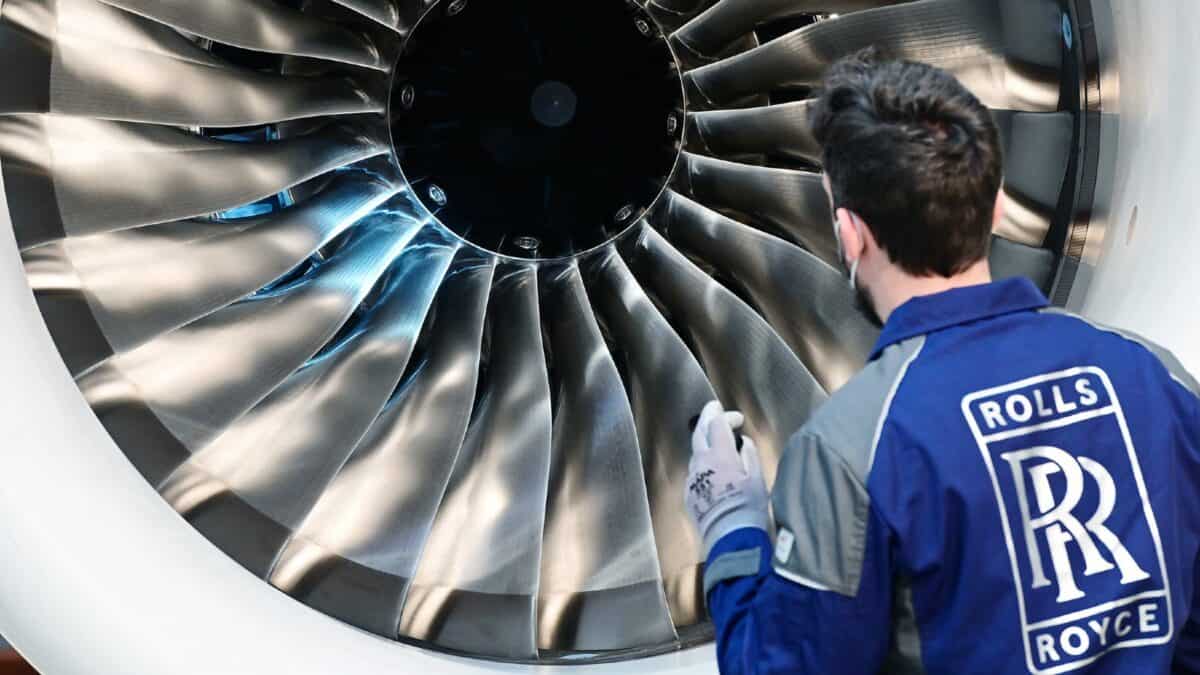While many FTSE 100 companies started recovering from the correction in 2023, Rolls-Royce (LSE:RR.) stole the show. The once-struggling engineering giant executed a miracle comeback that led to a 220% surge in share price over the 12 months.
As such, the stock is now ahead of pre-pandemic levels while also being in a seemingly superior position. So, the question now becomes, can the group continue to deliver upward momentum in 2024? Let’s take a closer look.
Tailwinds keep blowing
Rolls-Royce has its fingers in many different pies. But the most important division seems to be its civil aerospace segment. Responsible for about half of all sales, the segment was beaten to a pulp during the pandemic. Consequently, there were genuine concerns that the business was heading for bankruptcy, ending a more than 100-year legacy.
But since Tufan Erginbilgic took over the corner office, such fears have been quelled. He quickly launched a fairly radical overhaul of the business, disposing of non-core operations, cutting thousands of jobs, and paving the way to more efficient operations.
When paired with the natural recovery tailwinds of the long-haul travel market, free cash flow (FCF) made an impressive return. In its 2023 interim results, FCF from continuing operations landed at £356m versus a loss of £68m a year prior. And management guidance for the full year has been upgraded to be as high as £1bn!
Is this likely? In my opinion, yes. Why? Because the travel market in the Asia Pacific region has finally started bouncing back with a massive surge in long-haul travel, largely driven by the reopening of the Chinese economy.
Subsequently, the management team have shared their medium-term goals for operating profit to reach between £2.5bn and £2.8bn, with overall margins landing between 13% and 15%. If successful, that would position the business among the best in class against its peers. And that certainly sounds like a promising investment opportunity in my mind.
Caveats to consider
As impressive as Rolls-Royce has been, there’s still a giant elephant in the room. Even with improvements in cash generation and the disposal of certain assets, the group’s liabilities still top its assets by more than £6bn!
Investors seem to be confident that this balance will shift in the future. And if management hits its targets, this assumption is realistic. However, this is far from guaranteed, especially since the firm doesn’t exactly have a long list of significant competitive advantages versus its rivals.
What’s more, if billions are being spent to shore up the balance sheet instead of being allocated to research and innovation, the company may find itself falling behind. So, where does that leave investors today?
Personally, I’m not convinced further upward momentum will be necessarily sustainable. At least, not while the firm continues to carry such a huge pile of debt. The restoration of free cash flow generation is undoubtedly a welcome sign. However, since this excess capital will more than likely be allocated to paying down debts, it doesn’t give as much flexibility compared to other firms in this space that are already in a superior financial position.
Therefore, despite its promising outlook, I’m still on the fence about adding this enterprise to my portfolio today.







